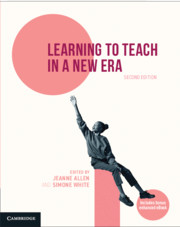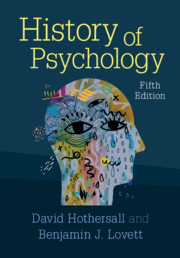Refine search
Actions for selected content:
36849 results in Cambridge Textbooks
10 - Harmonic Oscillators and SU(3)
- from Part I - Symmetry Groups and Algebras
-
- Book:
- Symmetry, Broken Symmetry, and Topology in Modern Physics
- Published online:
- 17 March 2022
- Print publication:
- 31 March 2022, pp 174-190
-
- Chapter
- Export citation
31 - Nuclear Fermion Dynamical Symmetry
- from Part IV - A Variety of Physical Applications
-
- Book:
- Symmetry, Broken Symmetry, and Topology in Modern Physics
- Published online:
- 17 March 2022
- Print publication:
- 31 March 2022, pp 543-556
-
- Chapter
- Export citation
12 - Ethics in Machine Learning
-
- Book:
- Machine Learning
- Published online:
- 27 May 2022
- Print publication:
- 31 March 2022, pp 309-326
-
- Chapter
- Export citation
6 - The Rotation Group
- from Part I - Symmetry Groups and Algebras
-
- Book:
- Symmetry, Broken Symmetry, and Topology in Modern Physics
- Published online:
- 17 March 2022
- Print publication:
- 31 March 2022, pp 97-125
-
- Chapter
- Export citation
7 - Ensemble Methods: Bagging and Boosting
-
- Book:
- Machine Learning
- Published online:
- 27 May 2022
- Print publication:
- 31 March 2022, pp 163-188
-
- Chapter
- Export citation

Computer Architecture for Scientists
- Principles and Performance
-
- Published online:
- 25 March 2022
- Print publication:
- 10 March 2022
-
- Textbook
- Export citation

Learning to Teach in a New Era
-
- Published online:
- 24 March 2022
- Print publication:
- 15 September 2021
-
- Textbook
- Export citation

History of Psychology
-
- Published online:
- 24 March 2022
- Print publication:
- 24 March 2022
-
- Textbook
- Export citation
Chapter 6 - Introduction
- from Part III - The 11th and 12th Centuries
-
- Book:
- Introduction to Medieval Theology
- Published online:
- 15 April 2022
- Print publication:
- 24 March 2022, pp 77-82
-
- Chapter
- Export citation
7 - Nature and Extent of Corporate Human Rights Responsibility
- from Part III - Corporate Human Rights Responsibility
-
- Book:
- Business and Human Rights
- Published online:
- 05 March 2022
- Print publication:
- 24 March 2022, pp 126-141
-
- Chapter
- Export citation
Copyright page
-
- Book:
- Comparative Law
- Published online:
- 15 March 2022
- Print publication:
- 24 March 2022, pp viii-viii
-
- Chapter
- Export citation
7 - Gestalt Psychology in Germany and the United States
-
- Book:
- History of Psychology
- Published online:
- 24 March 2022
- Print publication:
- 24 March 2022, pp 185-218
-
- Chapter
- Export citation
Copyright page
-
- Book:
- Introduction to Medieval Theology
- Published online:
- 15 April 2022
- Print publication:
- 24 March 2022, pp iv-iv
-
- Chapter
- Export citation
8 - The Evolutionary Perspective in Britain: Charles Darwin and Francis Galton
-
- Book:
- History of Psychology
- Published online:
- 24 March 2022
- Print publication:
- 24 March 2022, pp 219-250
-
- Chapter
- Export citation
Part II - Extending the Methods of Comparative Law
-
- Book:
- Comparative Law
- Published online:
- 15 March 2022
- Print publication:
- 24 March 2022, pp 139-284
-
- Chapter
- Export citation
16 - Conclusion: Building Back Better
- from Part V - Selected Industries and Emerging Discussions
-
- Book:
- Business and Human Rights
- Published online:
- 05 March 2022
- Print publication:
- 24 March 2022, pp 364-367
-
- Chapter
- Export citation
Bibliography
-
- Book:
- Introduction to Medieval Theology
- Published online:
- 15 April 2022
- Print publication:
- 24 March 2022, pp 368-376
-
- Chapter
- Export citation
Chapter 5 - John Scottus Eriugena and the Carolingian Renaissance
- from Part II - Early Medieval Theologians
-
- Book:
- Introduction to Medieval Theology
- Published online:
- 15 April 2022
- Print publication:
- 24 March 2022, pp 56-74
-
- Chapter
- Export citation
Preface to the Second Edition
-
- Book:
- Introduction to Medieval Theology
- Published online:
- 15 April 2022
- Print publication:
- 24 March 2022, pp ix-x
-
- Chapter
- Export citation
Preface
-
- Book:
- History of Psychology
- Published online:
- 24 March 2022
- Print publication:
- 24 March 2022, pp xi-xvi
-
- Chapter
- Export citation
